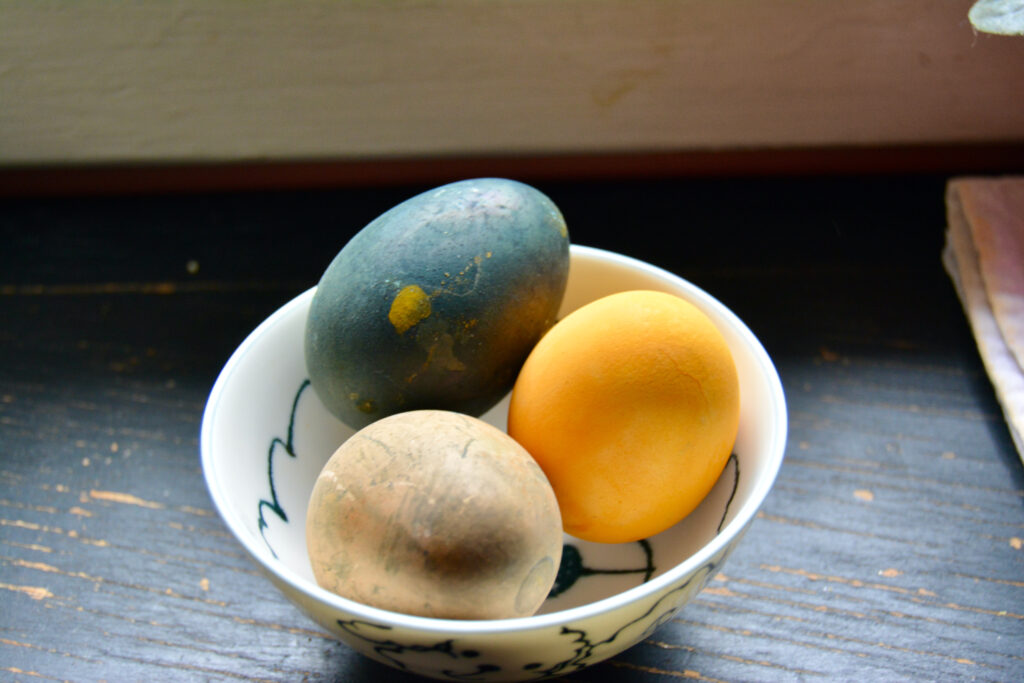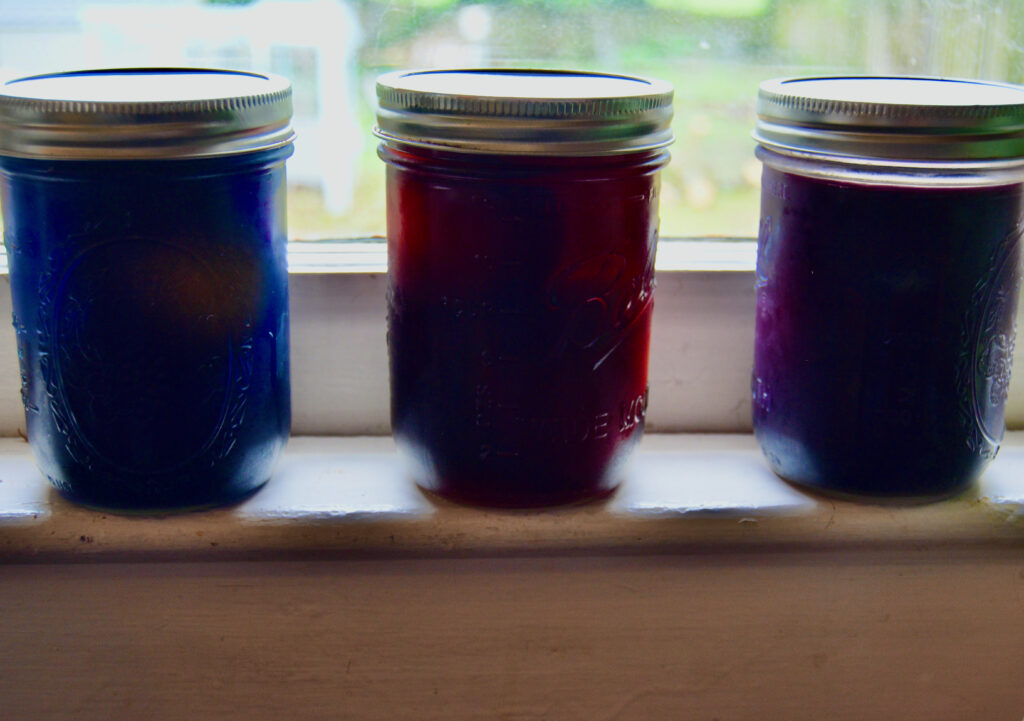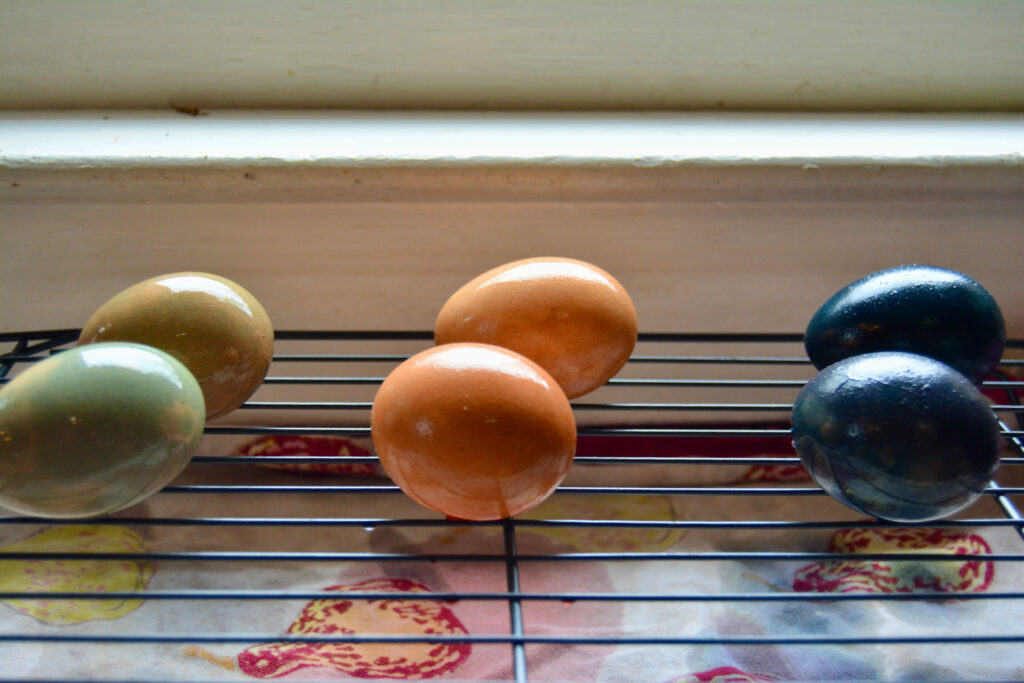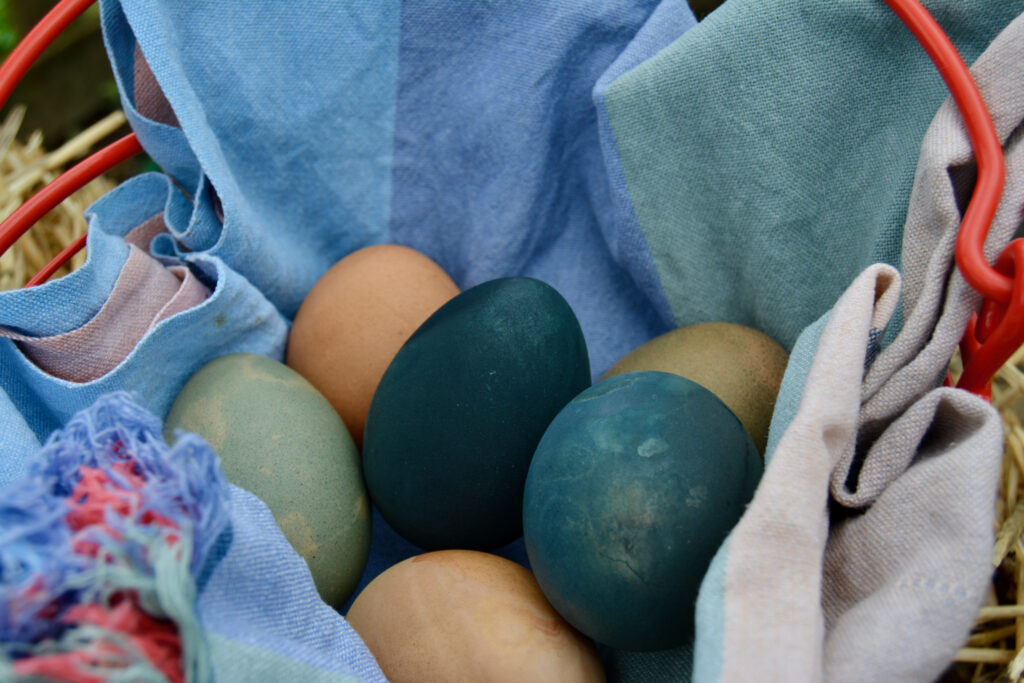There are numerous theories about where the modern practice of dying eggs for easter came from. I’m not an observer of Easter myself, but I have always enjoyed the practice of dying eggs. It’s not lost on me that hunting for eggs has lost its charm since I know have to actually search for eggs around my yard that the chickens may have hidden.

Anyway, now that I’m an adult and in largely in charge of what I put in my food I’m somewhat hesitant to eat artificial dyes, especially if I might end up giving them to friends’ kids.
Some things I like to use as natural dyes: red cabbage, turmeric, red beets, hibiscus tea, frozen blueberries, juices (cranberry/grape) and coffee.
Red and yellow onion skins do add some interesting effects and colors from what I’ve seen online, but as you likely know by now, I am allergic to those so I haven’t tried them.
Hard boiling your eggs! I have a digital pressure cooker, which is now basically the only way I will hard boil my eggs. I don’t have a name brand one, but I just put 4-6 eggs in the cooker with about an inch of water, cook on high for 6 minutes and let it depressurize on its own. This method regularly gives me eggs that are cooked through and with shells that come right off with the ice bath.
If you don’t have a pressure cooker or prefer to do it on the stovetop here’s my suggested method. Place eggs (older are better) in a single layer on the bottom of a medium to large sized pot, cover with cold water to at least one inch above the top of the eggs. Add 1/4 cup white vinegar. Cover and bring to a rolling boil. Remove from heat, keep covered, and let sit for 10 minutes. Using a slotted spoon remove the eggs and add to an ice bath for another 10 minutes. Drain and move to the fridge.

Dying Method
Red Cabbage: Makes light blue to green eggs. 1) Shred 2 cups of red cabbage, fresh is better in terms of the dye potential. 2) Add cabbage to 2.5 cups of water in a medium pot on the stove, bring to a boil, reduce heat and simmer for 15 minutes. 3) Allow to fully cool, strain out the cabbage (compost it if you can). 4) Add two tablespoons of white vinegar. 5) Add two hard boiled eggs to a glass jar (I like wide mouth pints). 6) Cover with the cooled cabbage mixture. 7) Refrigerate overnight.
Hibiscus: Makes black, dark blue, or dark grey eggs. I found a tea mix that included dried blueberries, green tea, and hibiscus flowers. Bring 2.5 cups of water to a boil, add 1/2 cup of dried tea and reduce to a simmer for 15 minutes. Allow to fully cool, strain out the tea. Add two tablespoons of white vinegar. Add eggs to jar, cover with liquid. Refrigerate overnight.
Beet: Makes pink to rosy brown eggs. Peel and dice 2 cups of red beets. Add to a medium sauce pot and cover with 2.5 cups of water. Bring to a boil, reduce to simmer for 15 minutes. Follow steps 3 to 7 from above.
Spinach: Makes green to blue eggs. Chop 2 cups of fresh spinach and add in batches to a pot with 2.5 cups of simmering water. Spinach wilts down so add it slowly so it can all fit, simmer for 10 minutes and follow steps 3-7 above.
Turmeric: Bright yellow cheery eggs. Add 2 tablespoons of dried ground turmeric to 2 cups of simmering water, and continue to simmer for 10 minutes. I do not strain out the ground turmeric for this, I think it adds extra vibrancy to the color. Follow the above steps.
Juices: I use as natural of juice as possible with minimal preservatives and straining. In this case no need to boil or simmer, just add the vinegar and eggs.
Coffee: Yellow to mustard eggs! Use a dark or espresso roast for the best colors. Bring 2.5 of water to boil, add 1/4 cup ground coffee. If you want the eggs to be darker leave the grounds in, if you want something lighter go ahead and strain out the grounds.
Frozen Blueberries: Midrange blues. Add 1.5 cups frozen blueberries to 2.5 cups of water, and bring both to a boil. Follow 3 -7

The next day, carefully remove the eggs from the jars using a spoon (slotted works best) and move to a cookie rack or clean towel. The dyes will likely stain whatever you put underneath them. They can take a while to dry, I suggest turning them with a spoon since fingers can wipe off the color before they dry. Once dry, have fun! Eat em, photograph them, whatever! Refrigerate if not eating within an hour or two.

Get out and explore, there are lots of plants with natural dye abilities, just keep in mind that the eggs may take on some flavor from the ingredients.